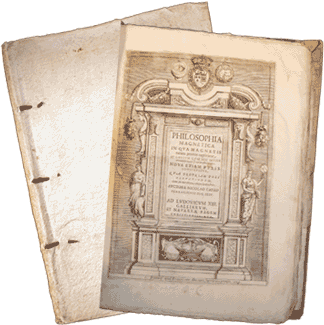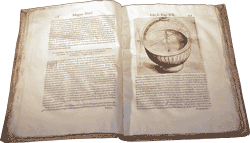|

Philisophia Magnetica
Nicolo Cabeo
1629 |
This is the first edition of the first work in which
electrical repulsion is recognized and described. It is the
second Latin book published on electricity, being preceded
only by Gilbert's De Magnete. Wolf calls the discovery of
electrical repulsion "the most significant of the century
following Gilbert"13
The author, a learned Jesuit and professor of mathematics at
Parma, investigated the magnetization of iron, now attributed
to the inductive action of the Earth's field. He noticed that
filings attracted by excited amber sometimes recoiled to a
distance of several inches after making contact. He writes "Magnetic
attractions and repulsions are physical actions which take
place through the instrumentality of a certain quality of the
intermediate space, said quality extending from the
influencing to the influenced body... Bodies are not moved by
sympathy or antipathy, unless it be by certain forces which
are uniformly diffused. When these forces reach a body that is
suitable they produce changes in it, but they do not sensibly
affect the intermediate space nor the non-kindred bodies close
by it..."
 |
Cabeo follows Gilbert closely, although he opposed the views
of his predecessor on terrestrial magnetism. He disproves
sympathetic telegraphy, and gives diagrams of the magnetic
(lover's) telegraph. In one chapter he institutes a comparison
between electrical and magnetic attraction.
Rare, especially with the Ferrara imprint (copies were also
published with a Cologne, 1629, imprint). "Copies of this
first edition... are much sought after4 "
*Poggendorff I, 355; Mottelay, Bibl. Hist. of Electricity, pp.
109-10. |